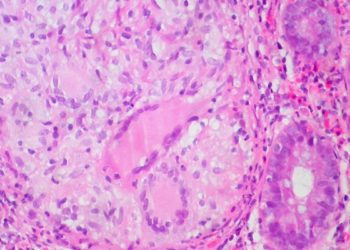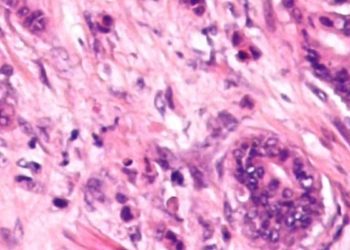Pathway modification reduces admissions for pediatric anaphylaxis
1. Inpatient and observation unit admissions for pediatric anaphylaxis decreased by more than half following implementation of a revised clinical care pathway.
2. More than 80% of patients were given an epinephrine autoinjector upon emergency department (ED) discharge following an anaphylactic attack.
Study Rundown: Anaphylaxis is a life-threatening allergic reaction, often related to food allergies, and is an increasingly common cause of ED visits among the pediatric population. Experts disagree on the optimal observation period after resolution of symptoms, with recommendations ranging from 3 to 24 hours. This variation results in increased hospitalizations and admissions to ED observation units. In this study, members of a multidisciplinary team revised an existing clinical care pathway for pediatric anaphylaxis to decrease the observation period from 8 hours to 4 hours, as well as to improve provider education about anaphylaxis treatment recommendations, and to increase the percent of anaphylaxis patients who leave the ED with an epinephrine autoinjector. After pathway revision, there was a >50% decrease in the number of admissions without an increase in the number of patients who returned to the ED within 72 hours for reasons related to the initial visit. There was no significant change in median time to first epinephrine dose (first-line treatment for anaphylaxis). More than 80% of patients were given an epinephrine autoinjector upon ED discharge. Limitations of this study included a lack of data regarding readmissions to EDs or urgent care centers outside the primary hospital’s network, nor did it collect baseline data regarding the number of patients receiving autoinjectors upon ED discharge prior to pathway revision. Results of this study suggest decreasing observation periods following pediatric anaphylaxis to 4 hours can safely and effectively decrease hospital admissions.
Click to read the study, published today in Pediatrics
Relevant reading: Food allergy among U.S. children: trends in prevalence and hospitalizations
In-depth [Quality Improvement]: Researchers from Children’s Hospital of Philadelphia analyzed data from 182 pediatric anaphylaxis cases seen prior to and 257 cases seen after revision of a clinical care pathway in the hospital’s ED. The pathway was updated in 2014 using input from a multidisciplinary team based on national expert opinions. Changes to the pathway included: decreasing the recommended post-treatment observation period from 8 to 4 hours; inserting a chart with anaphylaxis diagnostic criteria and highlighting epinephrine as the first-line treatment; and including a section reminding nurses to discharge patients with epinephrine autoinjectors. Results showed pathway revision resulted in a decrease in hospital or observation unit admissions from 58.2% to 25.3% (p < .0001), without a concurrent increase in patients returning to care within 72 hours for persistent anaphylaxis symptoms (1.3% vs. 2.6%, before and after revision respectively, p = .99). There was no significant change in the time to first epinephrine administration (median time 15 minutes and 10 minutes, respectively, p = .87). A total of 85.4% of patients discharged from the ED following anaphylaxis left with an epinephrine autoinjector in hand. The most frequently cited reason for patients not being given an autoinjector was that they already had one at home.
Image: CC/Wiki/AngelHM
©2018 2 Minute Medicine, Inc. All rights reserved. No works may be reproduced without expressed written consent from 2 Minute Medicine, Inc. Inquire about licensing here. No article should be construed as medical advice and is not intended as such by the authors or by 2 Minute Medicine, Inc.







